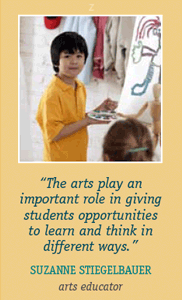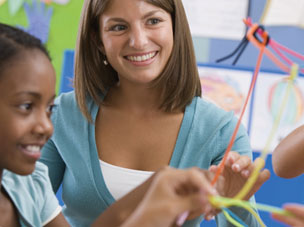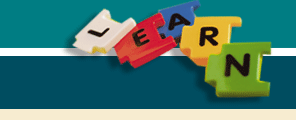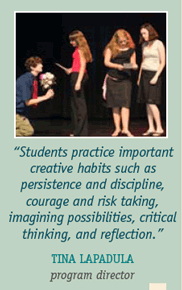Making Arts Matter in Afterschool
“Doing art made a change in me, opened something that I never knew was there . . . and just changed me.” This is the way a third-grade student named Devin describes his experience in an afterschool arts program. You can see Devin in a video called “Tunnel Books” in the arts section of the Afterschool Training Toolkit, a free, online staff development resource created by the National Partnership for Quality Afterschool Learning. (To watch the video, go to www.sedl.org/afterschool/toolkits/arts/pr_building_skills.html and click on “view video” at the top right part of the page.)
If you watch the video, you will see several characteristics of high-quality afterschool arts instruction in action. It is age appropriate, engages students, and is led by someone with training in the arts. Plus, it develops skills and vocabulary; utilizes a process of creating, presenting, and reflecting; and makes connections to other subjects. Devin and his classmates create “tunnel books,” so named for the three-dimensional scenes that resemble their namesake when they are stretched out. An artist leads students through the activity and holds their interest with a topic that most third graders love: bugs. While creating books that show a bug’s view of the world, students learn artistic media like printmaking and become familiar with terms like foreground, middle ground, and background. They articulate their enthusiasm and interest in “gallery walks” where they present and reflect on their work. One student comments that she has learned more about an insect’s habitat, indicating that she has made some connections to science during the project.
“The arts play an important role in giving students opportunities to learn and think in different ways,” says Suzanne Stiegelbauer, who developed the arts component of the Afterschool Training Toolkit. Participating in an arts program can allow students to be successful in ways that they might not be in a traditional academic setting. Any instructor who has observed students enjoying a creative outlet has seen the sheer pleasure they express in these activities. Research shows that these students are developing skills and self-confidence that they can apply to other areas of learning, thereby boosting overall academic achievement. |


|











